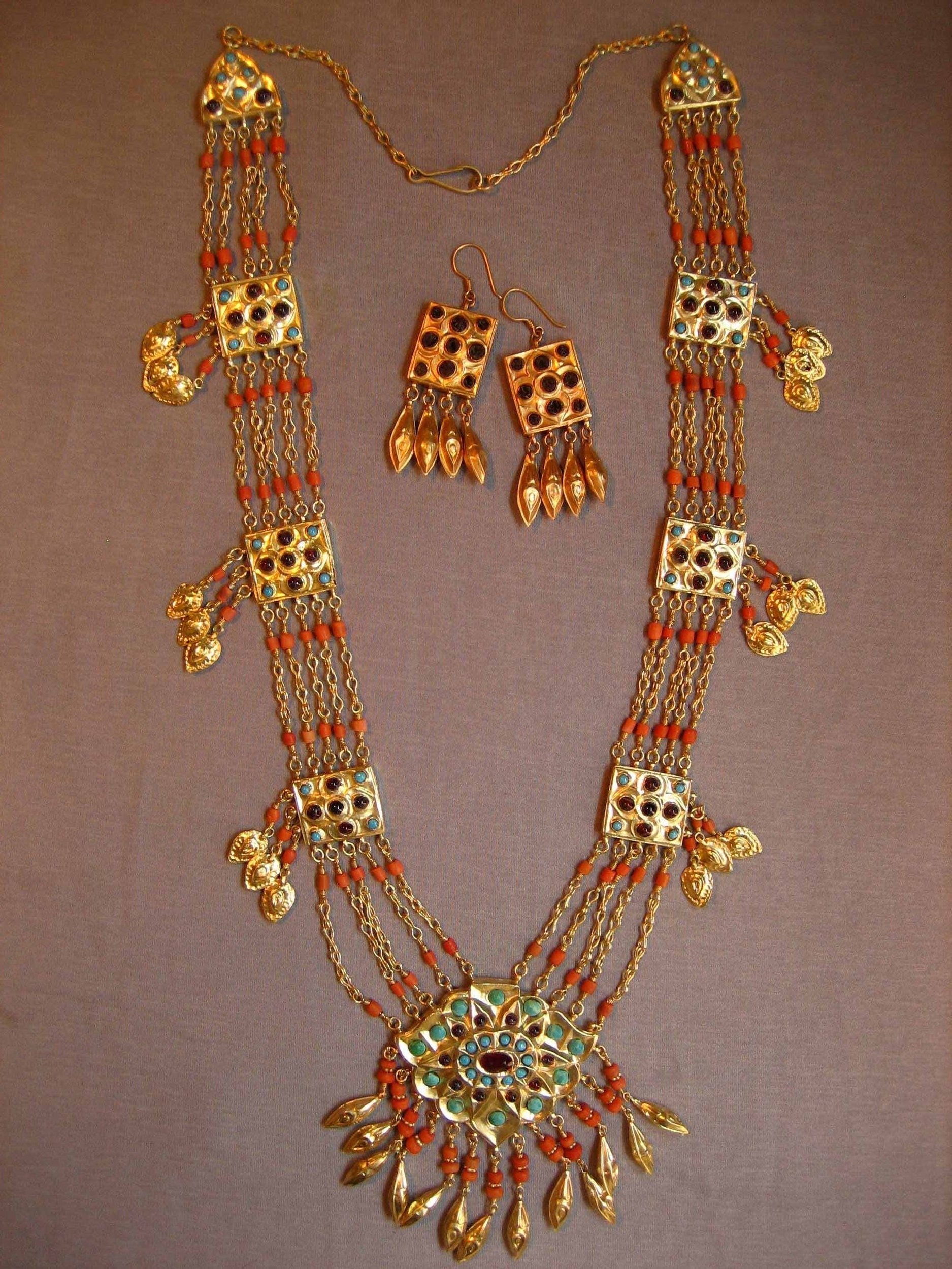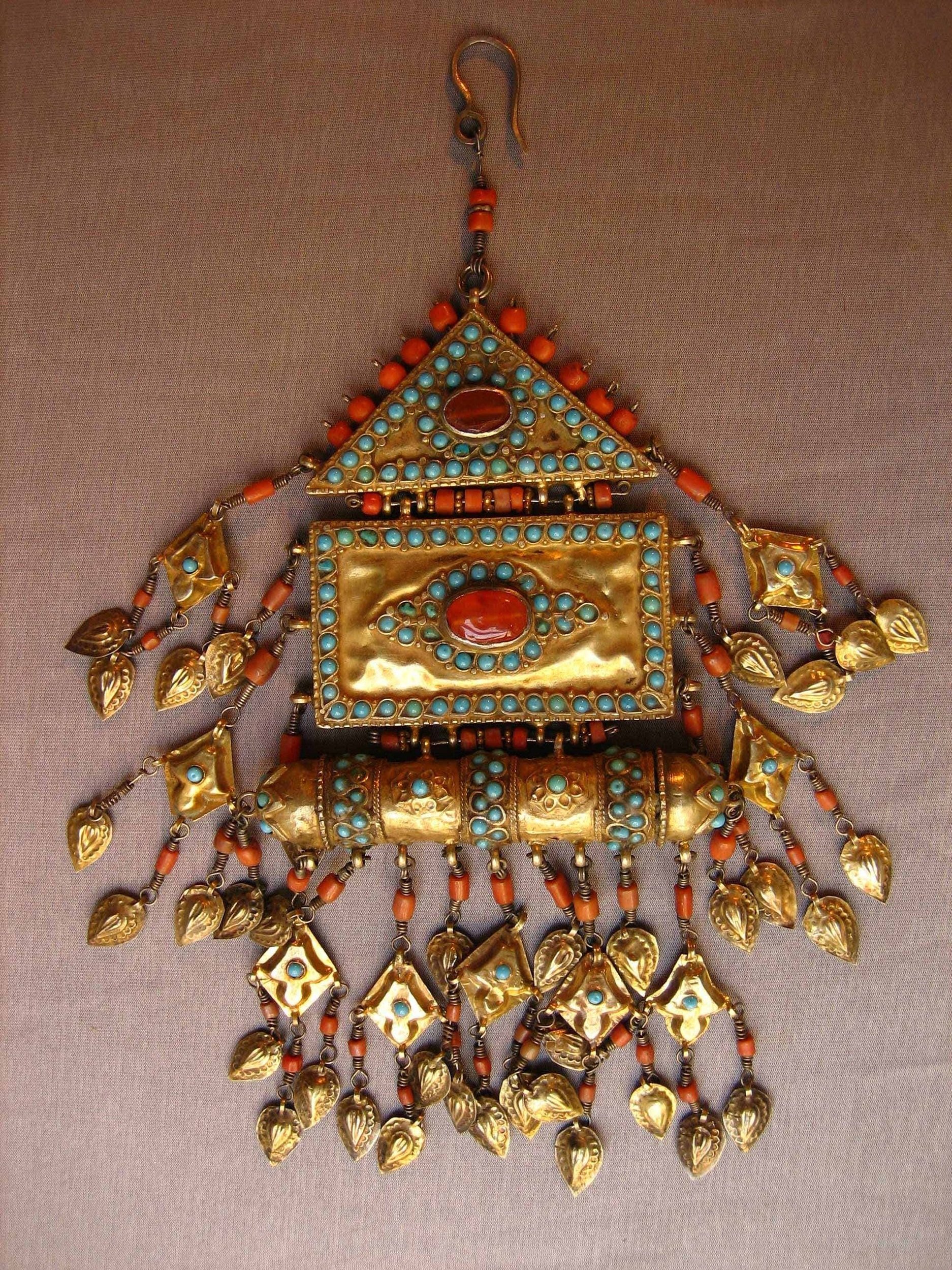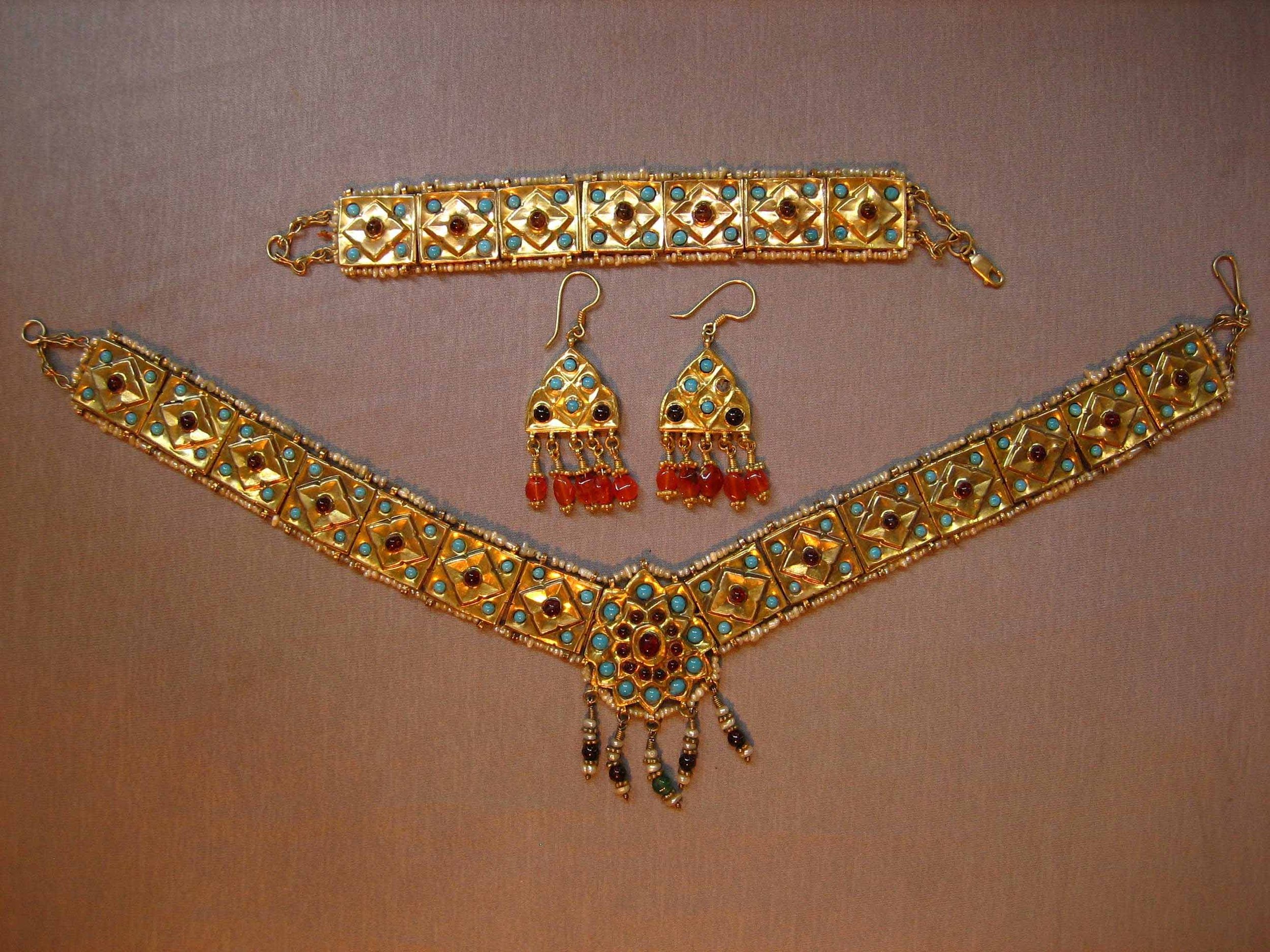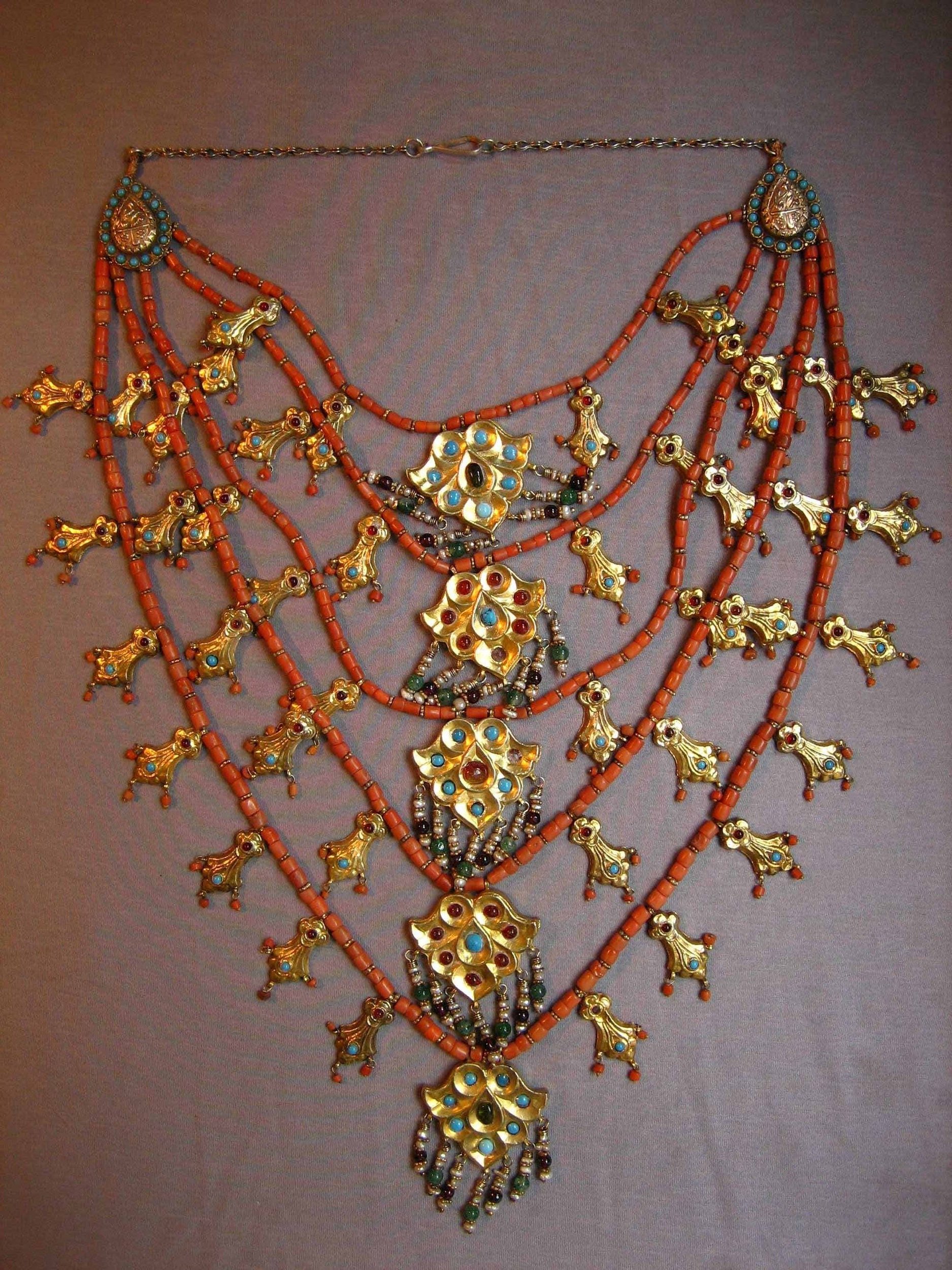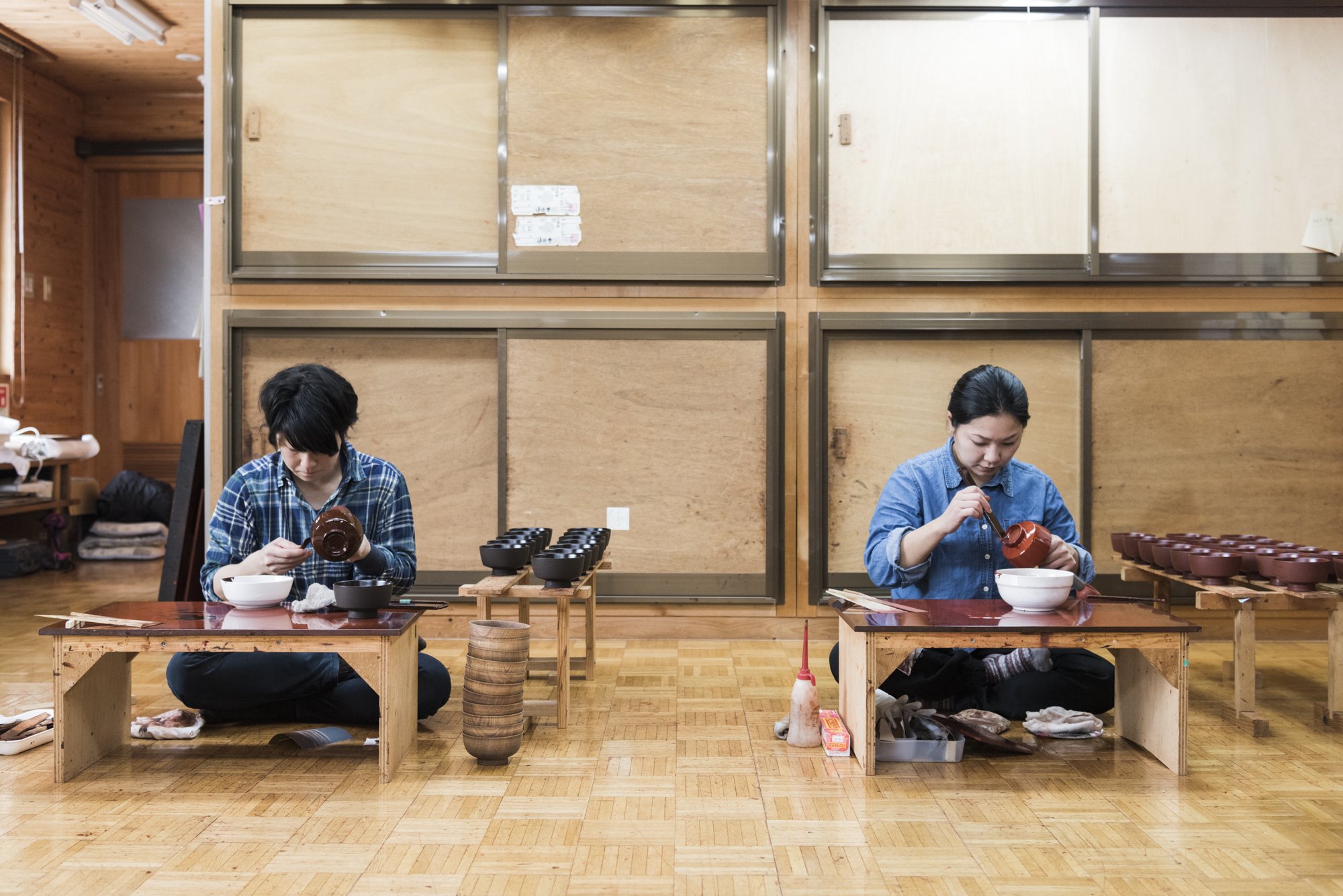Alisher Khaydarov
Uzbek History In Metal And Stone
Jewelry is one of the most ancient arts in Central Asia. It has held a prominent place in Uzbek culture throughout its history. Alisher Khaydarov continues to contribute to this tradition that has been in his family for generations. Alisher reproduces classic designs for both men and women using methods learned from his father and grandfather, who were master jewelers.
The history of jewelry in Uzbekistan has two distinct periods, Pre-Islamic and Muslim, that have shaped the art today. Pre-Islamic jewelry was defined by its complexity and vegetative, geometric, animal, and anthropomorphic motifs. Islamic traditions began in the 9th century. The resulting limitation of representational imagery led to the perfection of calligraphy, geometric designs, and “islimi” or plant-shaped ornamentation.
Jewelry was not always simply ornamental. It was believed that it offered spiritual and magical protection from diseases, poison, and curses while also bringing luck, wealth, and happiness to the wearer. Each material held a specific meaning. Silver reflected purity, “khakik” or carnelian brought health and happiness, turquoise improved sight and led to luck in battle, and much more. Today, traditional jewelry is mostly worn for ceremonies and weddings. Complete sets of jewelry are made for brides as they were historically for nobility.
Alisher creates filigree and stamp technique jewelry. Cables for filigree are made by melting sterling silver bars, rolling them through a machine, pulling them through a drawing plate, and finally twisting and shaping them by hand. The stamping technique is done by stamping, forming, and shaping sheets of silver. The majority of the metal, stones, and tools used are sourced from local markets.
Today, Alisher’s entire family is involved in the creation of the designs. He then makes the first model and they help with the production. “They are helping me to continue this traditional folk art that has been in my family for generations.” He explains, “It takes a lot of patience, time and creativity. I learned this from my grandfather, and am passing this knowledge to younger generations.”
Alisher is a UNESCO Award of Excellence Winner.



